
Foot & Ankle Bones
The foot is the region of the body distal to the leg and consists of 28 bones. These bones are arranged into longitudinal and transverse arches with the support of various muscles and ligaments. There are three arches in the foot, which are referred to as: Medial longitudinal arch. Lateral longitudinal arch.

Foot & Ankle Bones
Summary. The foot is an intricate part of the body, consisting of 26 bones, 33 joints, 107 ligaments, and 19 muscles. Scientists group the bones of the foot into the phalanges, tarsal bones, and.
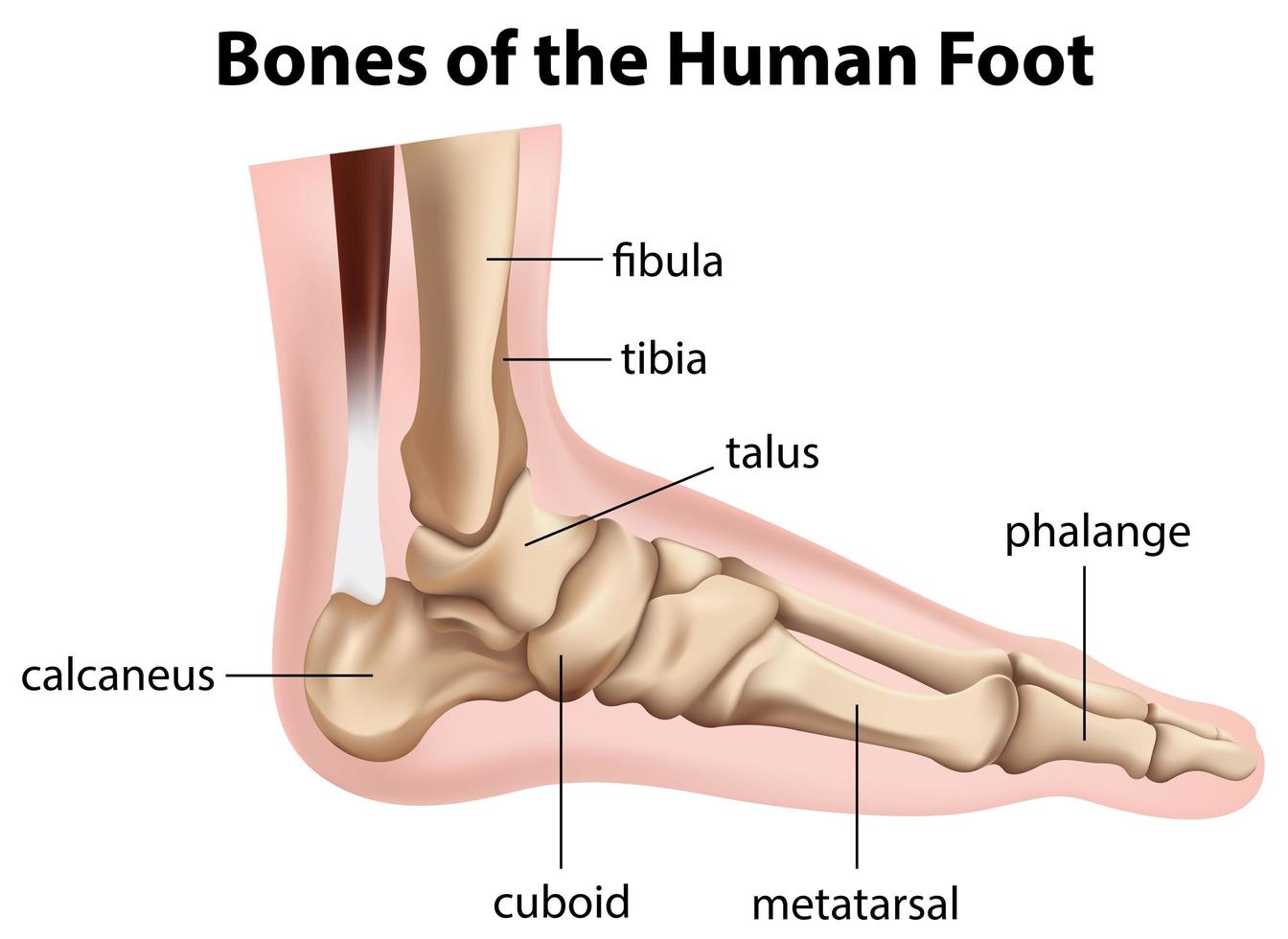
Bones of the human foot diagram 1142236 Vector Art at Vecteezy
Use these bones of the foot quizzes to master your identification skills. Overview of the bones of the foot and their divisions into the hindfoot, midfoot and forefoot. With a total of 26 bones in each foot, learning the bony anatomy of the foot is no piece of cake. That is, the memorization aspect.

Foot bones anatomy Royalty Free Vector Image VectorStock
Calcaneus: The largest bone of the foot, it is commonly referred to as the heel of the foot. It points upward, while the remaining bones of the feet point downward. Talus: This irregularly shaped.
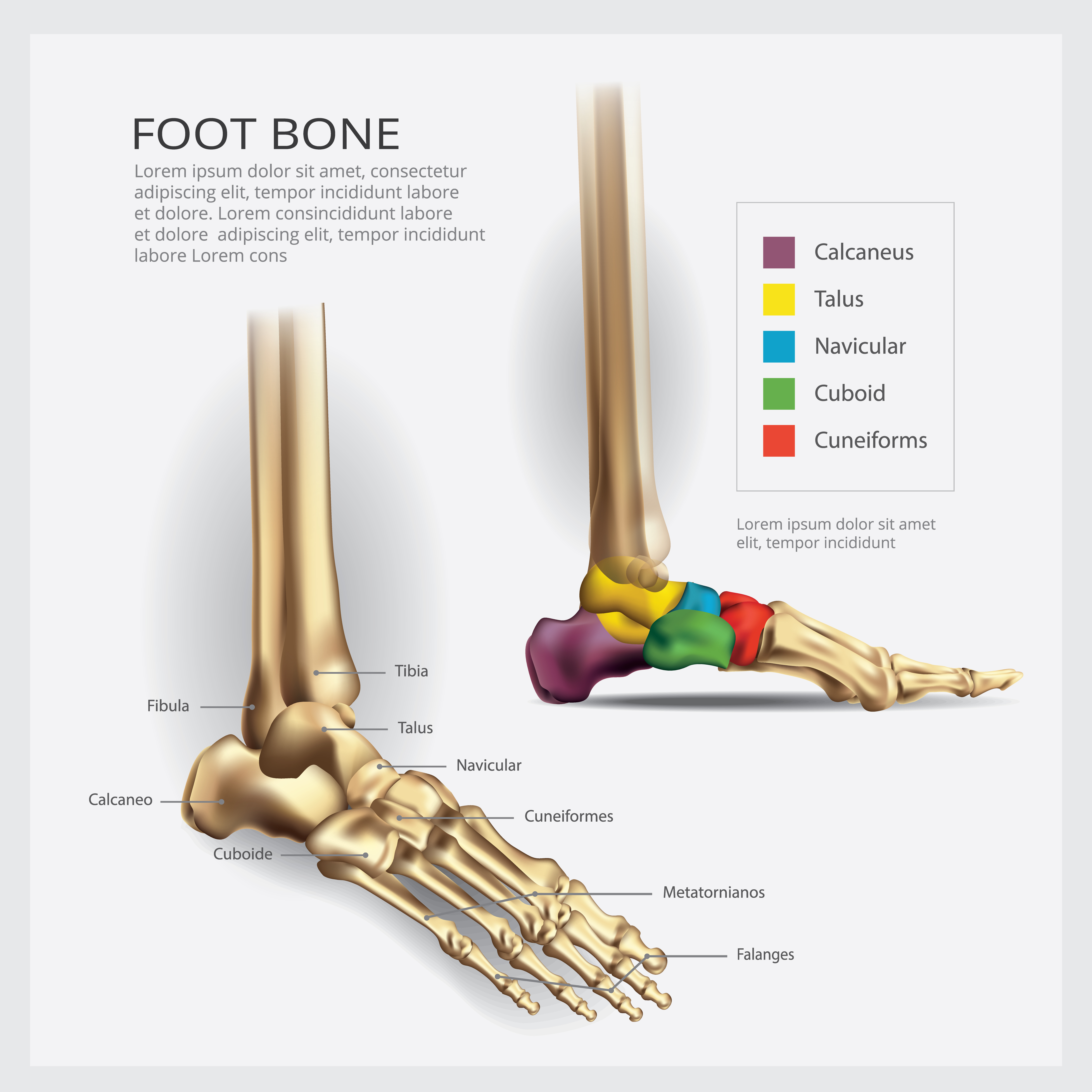
Foot Bone Anatomy Vector Illustration 539973 Vector Art at Vecteezy
The foot is a complex structure comprised of over 26 bones, 30 joints, numerous tendons, ligaments, and muscles responsible for our ability to stand upright, supporting the weight of the entire body and provides the base for the mechanism for bipedal gait. The foot corresponds to the portion of the lower extremity distal to the ankle and divides into hind, mid and forefoot.
.jpg)
Foot Bone Diagram resource Imageshare
The 26 bones of the foot consist of eight distinct types, including the tarsals, metatarsals, phalanges, cuneiforms, talus, navicular, and cuboid bones. The skeletal structure of the foot is.
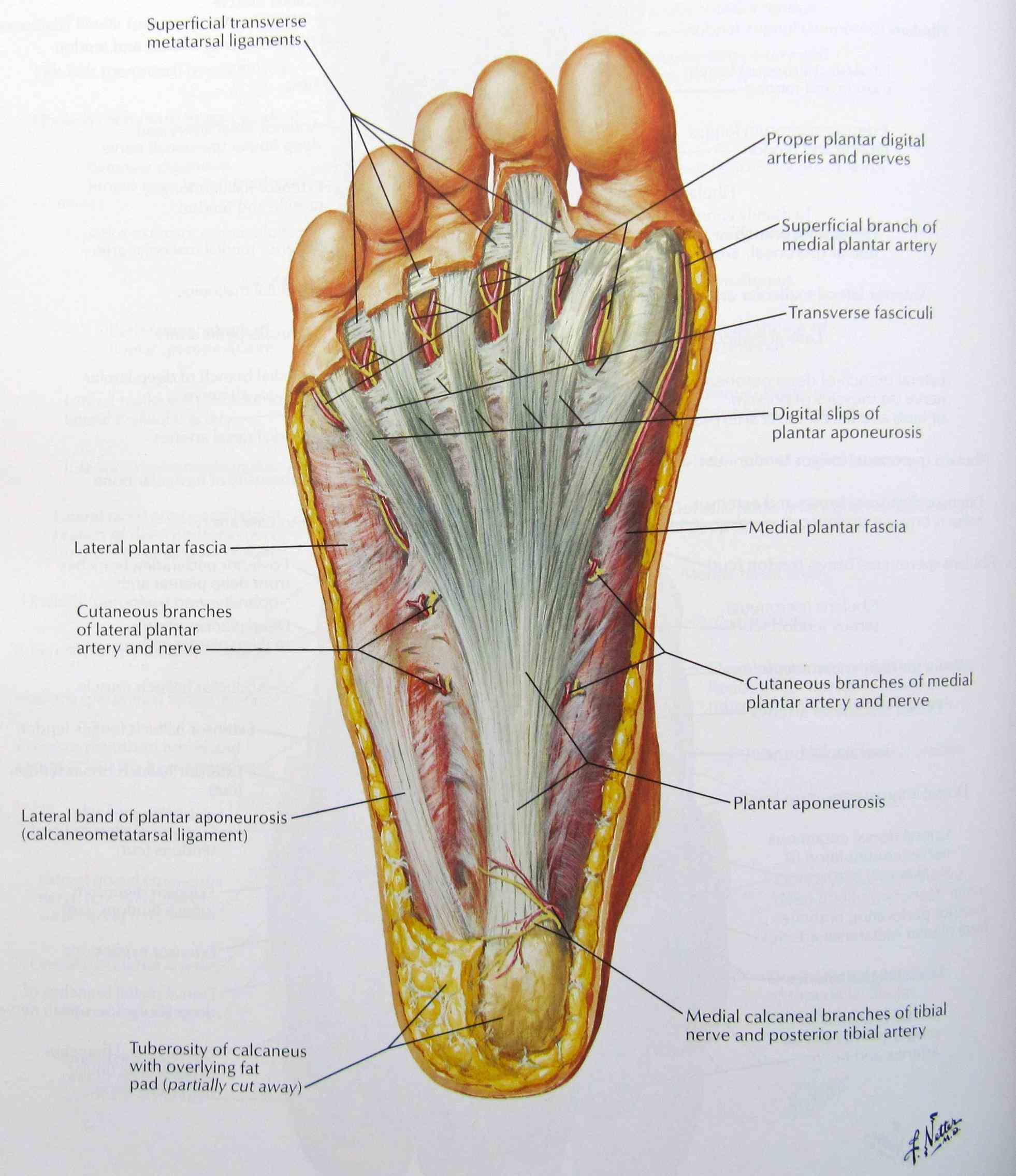
Anatomy The Bones Of The Foot
Foot Bones: Forefoot. The forefoot consists of 19 bones; 5 metatarsal bones and 14 phalanges. The big toe has 2 phalanges bones, while the remaining four have 3 phalanges each. The 1st metatarsal is the shortest and thickest of the metatarsals, and it is designed to take up to 40% of your body weight in standing, which rises to 70% when walking.

anatomy of the foot Ballet News Straight from the stage bringing you ballet insights
The bones of the foot provide mechanical support for the soft tissues; helping the foot withstand the weight of the body whilst standing and in motion.. They can be divided into three groups: Tarsals - a set of seven irregularly shaped bones.They are situated proximally in the foot in the ankle area. Metatarsals - connect the phalanges to the tarsals.

Foot skeleton composed of 28 skeletal bones. It can be divided into... Download Scientific Diagram
Tarsals. The tarsals are a group of seven bones close to the ankle. The proximal tarsal bones are the talus and the calcaneus, which is the largest bone of the foot. The talus is on top of the.
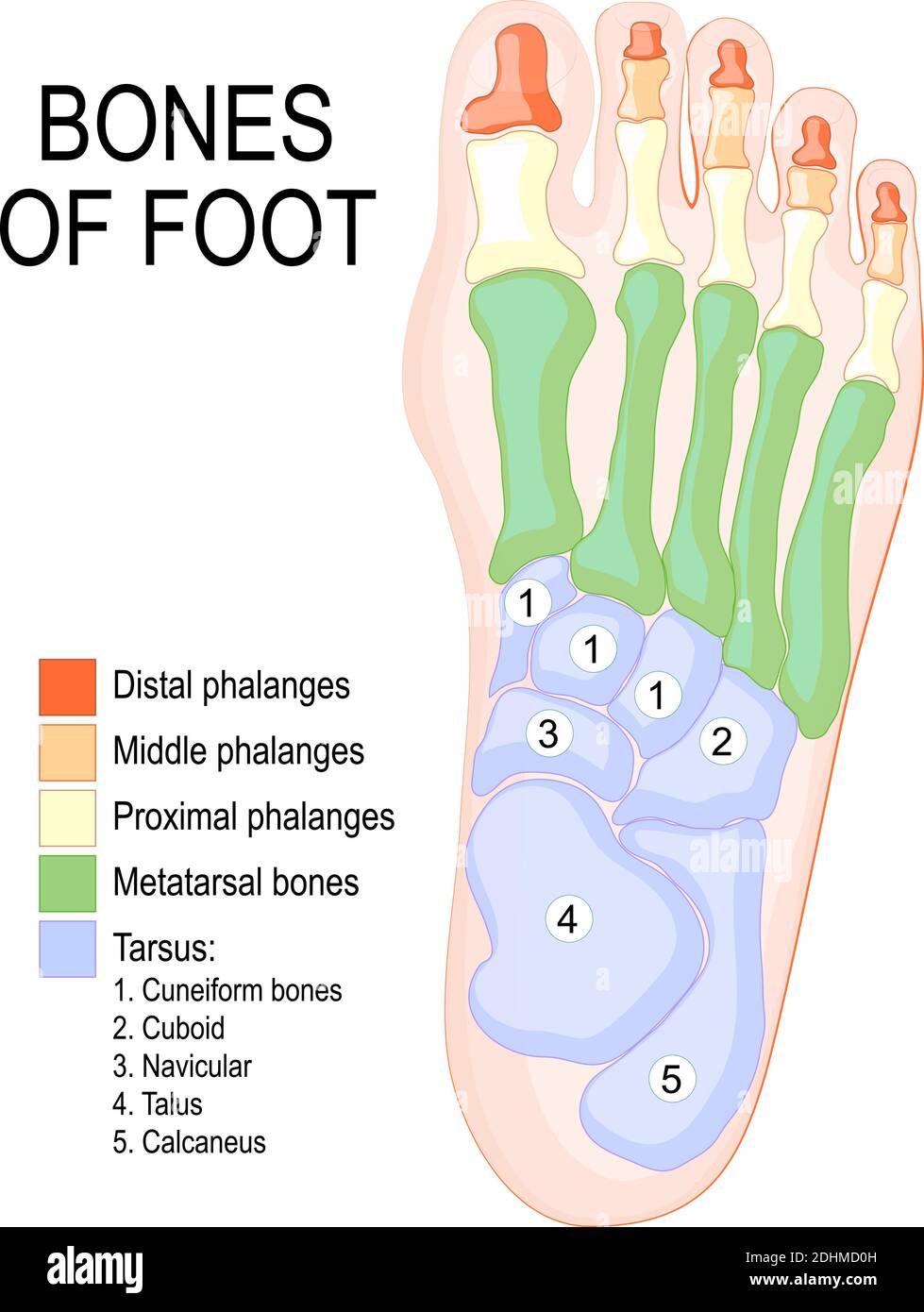
Bones of foot. Human Anatomy. The diagram shows the placement and names of all bones of foot
The first metatarsal bone leads to the big toe and plays an important role in forward movement. The second, third, and fourth metatarsal bones provide stability to the forefoot. Sesamoid bones: These are two small, oval-shaped bones beneath the first metatarsal on the underside (plantar surface) of the foot. It is embedded in a tendon at the.
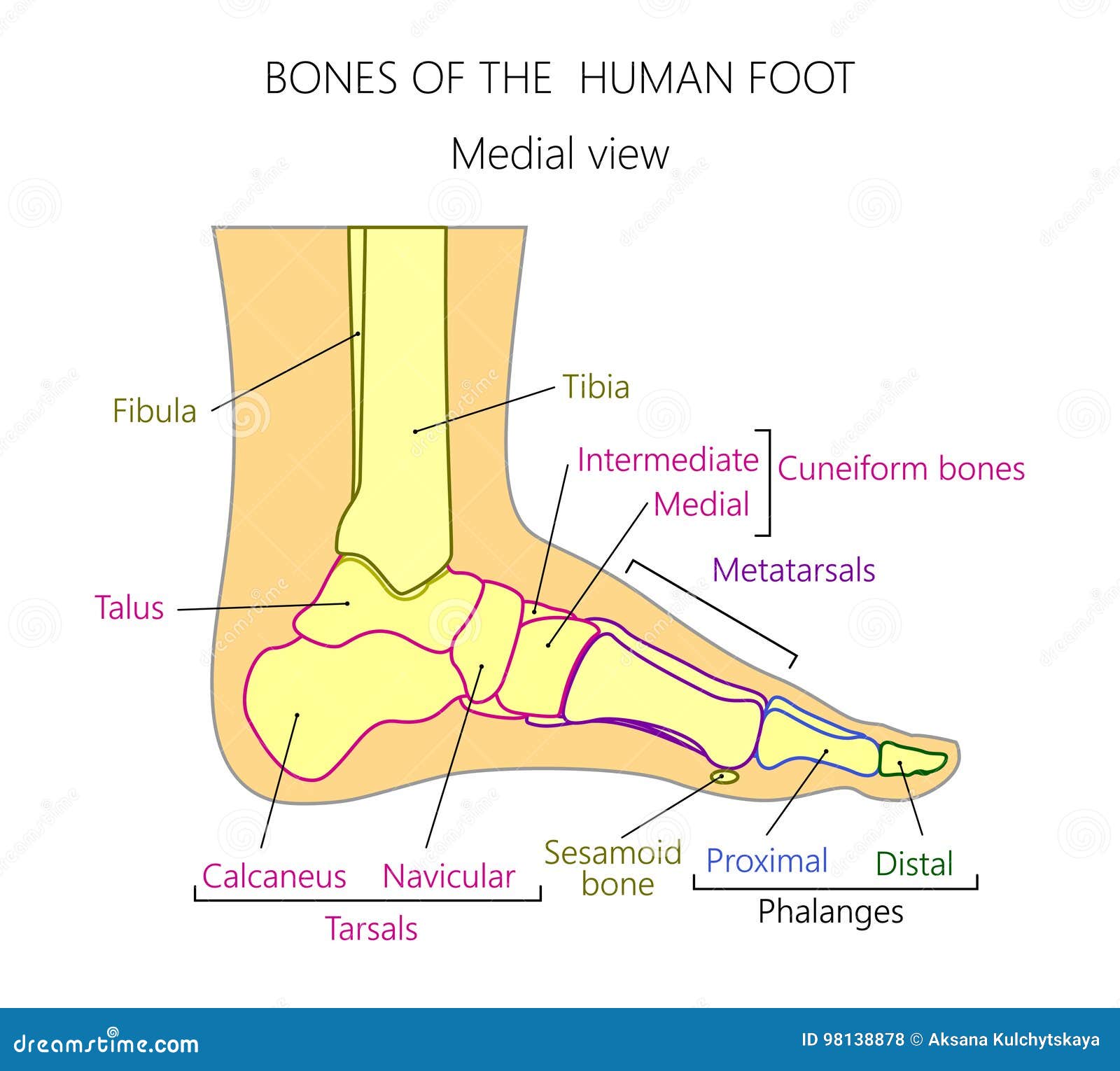
Anatomy_bones of the Human Foot Medial View Stock Vector Illustration of fibula, phalanx 98138878
The muscles of the foot are located mainly in the sole of the foot and divided into a central (medial) group and a group on either side (lateral). The muscles at the top of the foot fan out to supply the individual toes. The tendons in the foot are thick bands that connect muscles to bones. When the muscles tighten (contract) they pull on the.
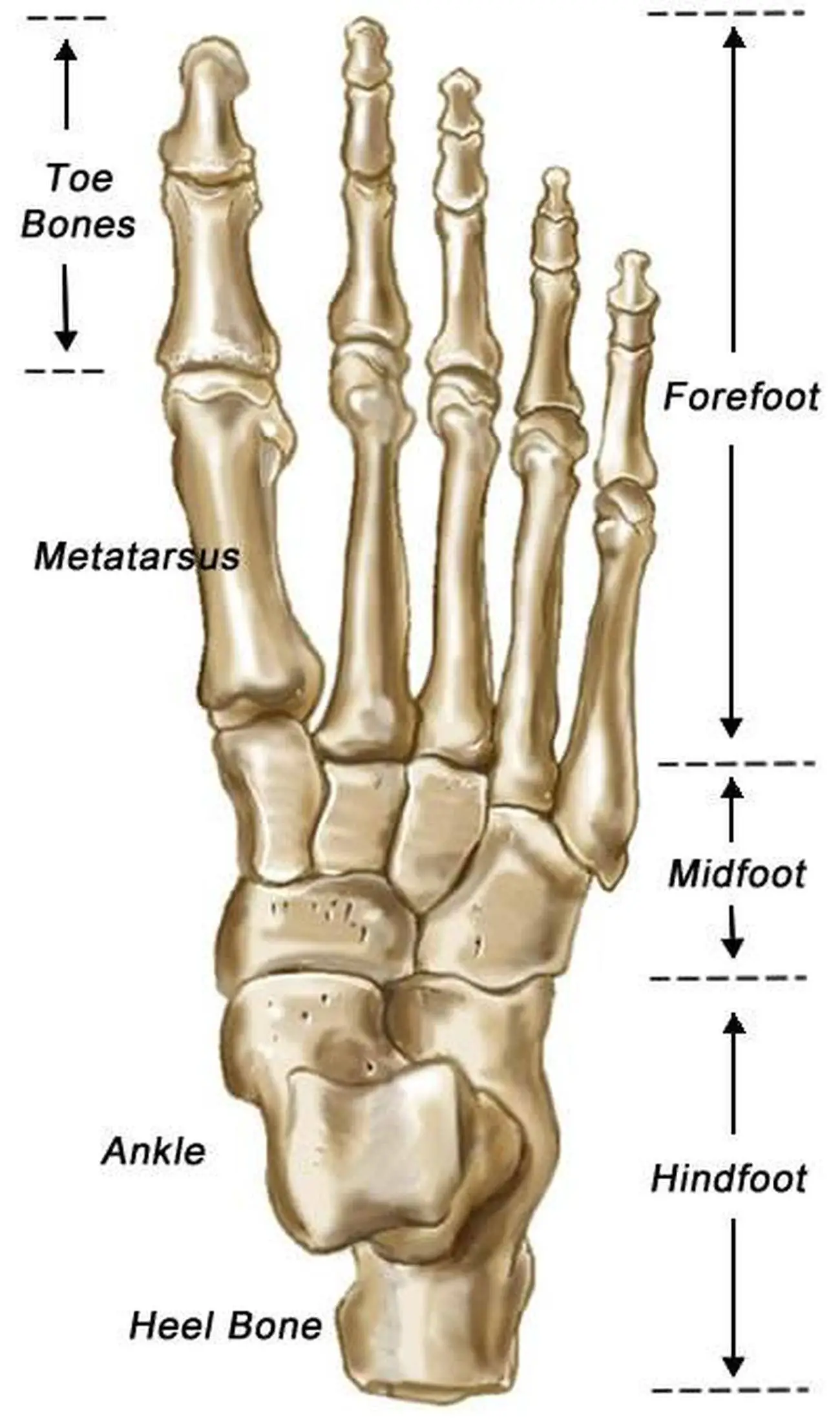
Pictures Of Bones Of The Feet
The tarsal bones in the foot are located amongst tibia, metatarsal bones, and fibula. There are in all 7 bones, which fall under tarsal bones category. They are: Calcaneus or Calcaneum: To explain the term in layman's language, it is the heel bone in the skeletal system. It is situated between talus and cuboid.

The bones in the foot inferior view (Picture illustrated from Thieme... Download Scientific
Ankle anatomy. The ankle joint, also known as the talocrural joint, allows dorsiflexion and plantar flexion of the foot. It is made up of three joints: upper ankle joint (tibiotarsal), talocalcaneonavicular, and subtalar joints.The last two together are called the lower ankle joint. The upper ankle joint is formed by the inferior surfaces of tibia and fibula, and the superior surface of talus.

Bone Of Left Foot Anatomy Amp Physiology Illustration Human Anatomy Body
The foot is a part of vertebrate anatomy which serves the purpose of supporting the animal's weight and allowing for locomotion on land. In humans, the foot is one of the most complex structures in the body. It is made up of over 100 moving parts - bones, muscles, tendons, and ligaments designed to allow the foot to balance the body's.

Anatomy of the Foot and Ankle OrthoPaedia
Introduction. The skeleton of the foot consists of 26 bones and these can be grouped into three groups:. The tarsus (ankle joint); The metatarsus; The phalanges (bones of the toes); There are 7 tarsal bones, 5 metatarsal bones and 14 phalanges.. Anatomically the foot can be divided into the forefoot (metatarsals and phalanges), the midfoot (cuboid, navicular and cuneiforms) and the hindfoot.

Foot Description, Drawings, Bones, & Facts Britannica
The bones of the foot are organized into rows named tarsal bones, metatarsal bones, and phalanges. These make up the toes and broad section of the feet. The other bones of the foot that create the.